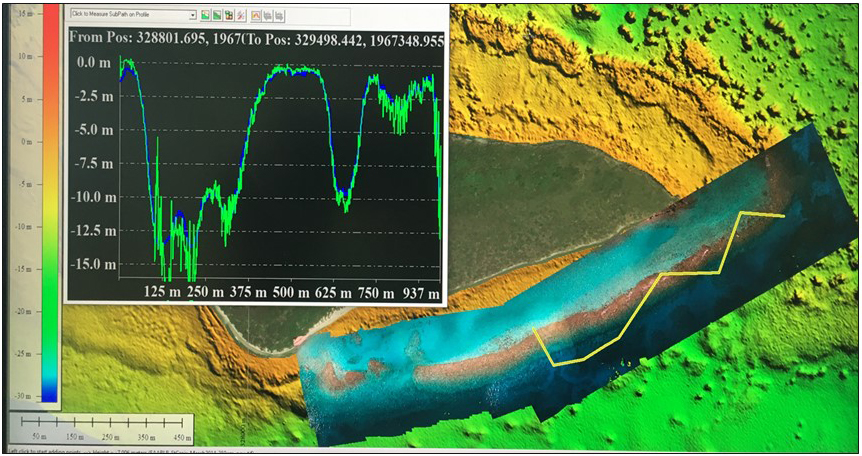Tim Battista and Bryan Costa received the first NCCOS Innovation Incentive Award for their work using airborne drones to map shallow-water habitats.
Mapping shallow, near-shore areas for NCCOS’s resource management partners is costly, frequently inefficient, and potentially dangerous using traditional methods. Tim and Bryan paired imagery from relatively inexpensive drones with Structure from Motion software to convert two-dimensional images into three-dimensional habitat maps. This innovation holds great promise for mapping many near-shore areas that are difficult to access, providing the photographs, elevation, and depth data needed to inform coastal management decisions. Tim and Bryan, with their supervisor’s concurrence, will determine the best use of the $50,000 innovation prize.
Runner-up congratulations go to Dave Whitall and Andrew Mason for their use of the artificial sweetener sucralose as an indicator to discriminate nutrient pollution originating from humans from that of animals; and James Morris, Ken Riley, and Lisa Wickliffe for their development of the Gulf AquaMapper, the first spatial planning tool designed specifically for aquaculture in federal waters of the United States.


